Note the rolling stands that I've built today. These sculptures have to go to E&L Collision just down the street for the final paint job of candy apple red. Any faults in the surface are going to glare like a ketchup stain on your white tie. The carts will make it easy for the painters to position these awkward shapes for finishing.
|
I thought, surely, that this job would be finished today. I did a final sanding job, and applied the final layer of primer. Of course, this showed up all kinds of little faults in the surface that had to be filled. So, again, lots of little daubs of red filler. Tomorrow, this will sand to perfection. Or not. This is pretty much day 4 of this process.
Note the rolling stands that I've built today. These sculptures have to go to E&L Collision just down the street for the final paint job of candy apple red. Any faults in the surface are going to glare like a ketchup stain on your white tie. The carts will make it easy for the painters to position these awkward shapes for finishing. I was recently sent this drawing and asked to make a 75mm diameter bronze medallion. This was to be cast lost wax at Artcast, so fine detail was not an issue. Still, there were lots of challenges here. Carving those tiny hands to the customer's satisfaction was going to be hard. Was I supposed to model these under a magnifier and send copies for approval? I could get the lettering done more or less digitally, but the hands were something that I would normally have modeled in wax. I played for some days with a different ways of generating a 3D drawing of these. After all kinds of failures, I hit upon a combination of Photoshop, Rhino 3D and Sculptris, the latter a program that allowed me to shape surfaces in a freehand way with the mouse. This is a screenshot from Sculptris. I sent quite a number of versions of this to the customer. Happily, the changes requested were only tweaks. Once the hands were approved, I added that surface to the medal. It's great that I can render my models in Rhino for approval. The customer could see exactly what they were going to get. I found a great company in BC, NSCNC that makes precision CNC mills for jewellers who could cut the wax from my digital model. Using cutters only a bit larger than the diameter of a hair, they cut this beautifully. Shown above is the wax. And here is the medal as cast and finished by Artcast. Unbelievable detail! I would never have pulled this off without all those digital toys.
Some years ago, I was commissioned to make a number of elements for an entrance feature to Strathcona, Alberta. I didn't ask about viewing angles or viewing distance. I just fired off a price to create this train. The train was over a metre long, and perhaps 150mm deep. I added all kinds of detail, rivets, metal seams, etc. I had to do left and right versions of this, so the time added up to carve all these tiny bits. I shipped everything to Edmonton and that was the last I heard of the project (except for the cheque, of course) Then, maybe a decade later I found myself on that street, a main entrance into Edmonton. I sort of recognized something about this sign, but it was some time before I realized that I'd spent all that time fussing with invisible detail. So, do you even see the trains, let alone rivets? Nice sign. With a zoom lens, I was able to resolve the trains. Sigh, all that work, viewed from 10 metres at 80 kph.
Now I ask, if I can, where work is being used. Some day, when the sign gets all rusted out, and Strathcona extends another 10K south, some workman might nail these aluminum trains to his garage, and the rivets will be appreciated. The National Capitol Commission wanted to update Parliament Hill lighting with security cameras. They hired Metalumen in Guelph, ON to facilitate this. They hired me to create new patterns for casting in ductile iron, working from rough drawings and a copy of an old lamp post. It turned out that this post had been made 3 different ways in the last 80 years or so. I susupect that the copy I had was one of the older versions. See the detail here? Definitely forged, not cast: Still, the order was to cast everything. And really quickly. I had a month to reverse engineer everything but the main post, and supply patterns. Here's how the decoration tooling looked: above are the patterns as I carved them. Below are these patterns fastened to boards, boxed with alignments and some other decoration: I guess the security camera housing did have to have certain dimensions, but I wish I could have been part of the conversation. Nobody 'designed' this. For such an important national site, I'm a bit sad that this looks so lumpy. See the first image for the installed element. Here's what the pattern looked like. It turned out that the supplied post tooling was from two different versions, and did not fit the casting I was supplied, so I wound up supplying that tooling, too, really late in the game, and really fast. Just another day at work.
So, this week I was asked to quote another phase of this project. looking forward to this! Toronto artist, Terry McGlade approached me to reproduce his "Hear The World" sculpture. The original had been made by Heavy Industries in Calgary, but they were no longer doing this kind of work. I got the moulds, nicely made silicone rubber and fibreglass, and started work. I had a stainless steel interior made to create a strong frame. Here's the partially laid up mould, steel in place, epoxy/chopped glass surface showing. I mixed up a gooey mix of epoxy and glass bubbles and squeezed the whole thing together. When it hardened, I opened up the pour holes in the top of the mould. I hooked a vacuum to a hole to help draw in the liquid foam. I was able to pour a pail of two part foam into the cavity in a few seconds, filling the whole cavity as it swelled up. Here's how the mould looked with the top pulled off: this is the first copy, ready for its coat of red automotive paint. I poured the second one today, always an adventure, foam making the mould creak a little as it moves about. I'll get these both to a paint shop once they are both done.
A law office in Dallas, TX wanted a custom bronze door pull for a board room. Working with the interior designer Kathleen Mowry, we came up with an approved design for double glass doors, splitting the logo in half, and figuring out size, weight, finish and mounting hardware of the design. 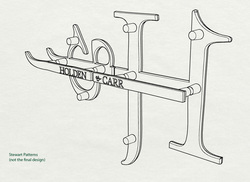 I use Rhino 3D v5 to generate designs, weights, centre of gravity, etc. Once the design is set, I can render it in Rhino Flamingo for illustration. The finalized design was sent to my CNC guy to create the beginning of the master pattern. This is the rendering to show context: and this is the casting, finished. Note that I added a 'hammered' texture on the surface. I carved this into the master, as there is no Hammering 6mm bronze!
I do hope to get a photo from the installed work in the near future. 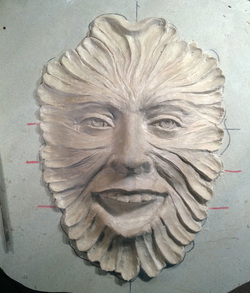 A fellow in Missouri saw my Green Man masks in bronze that I made in the early 00's and asked if I could make something similar. Once we determined the design, I sketched this out in clay, full size at 38cm (15") high. He wanted a few berries added, and I knew he liked bees, so we wound up with this: About 5kg (11 lb) in bronze, with mounting holes top and bottom.
|
stewart smithI'm a woodcarver, turned sculptor, and morphed into a pattern-maker for cast metals. These days I hesitate to define my work, avoiding words like 'artist' or 'craftsman'. I just love designing and making things, keeping a bit of time free to downhill ski, paddle my kayak, and sing with my fellow choristers. Archives
November 2014
Categories
All
|
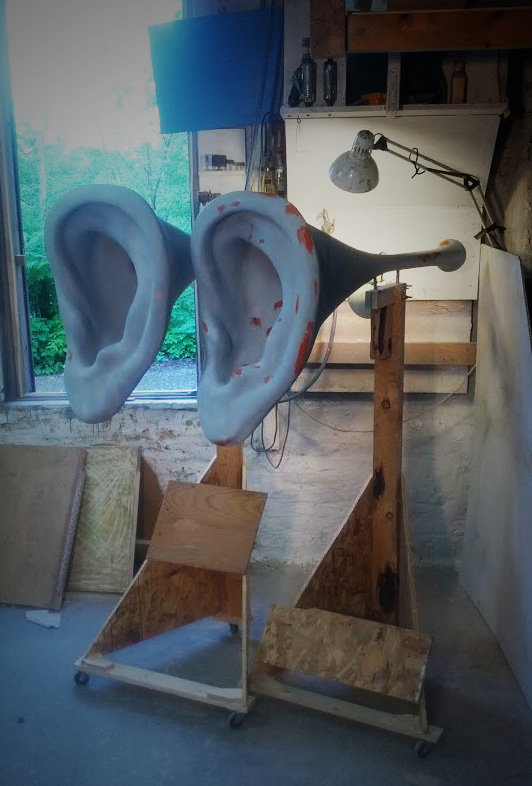
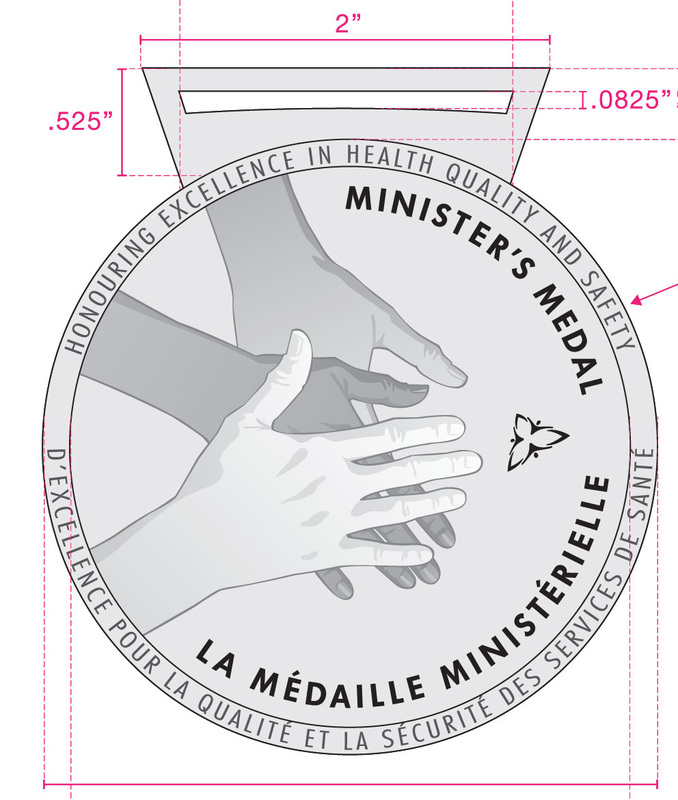
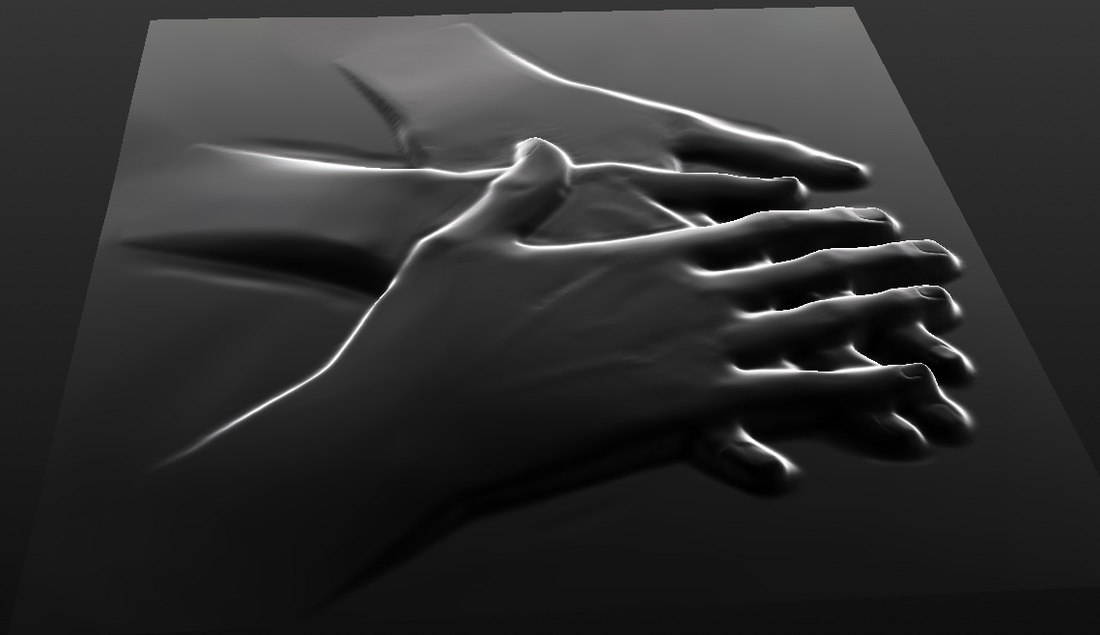
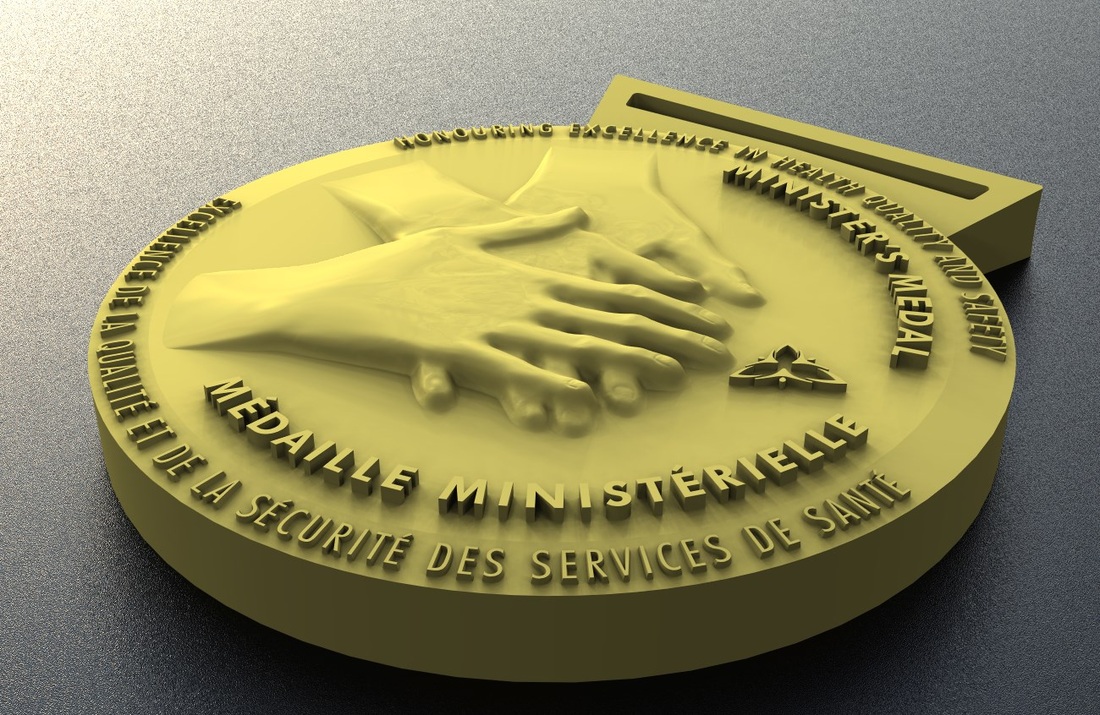
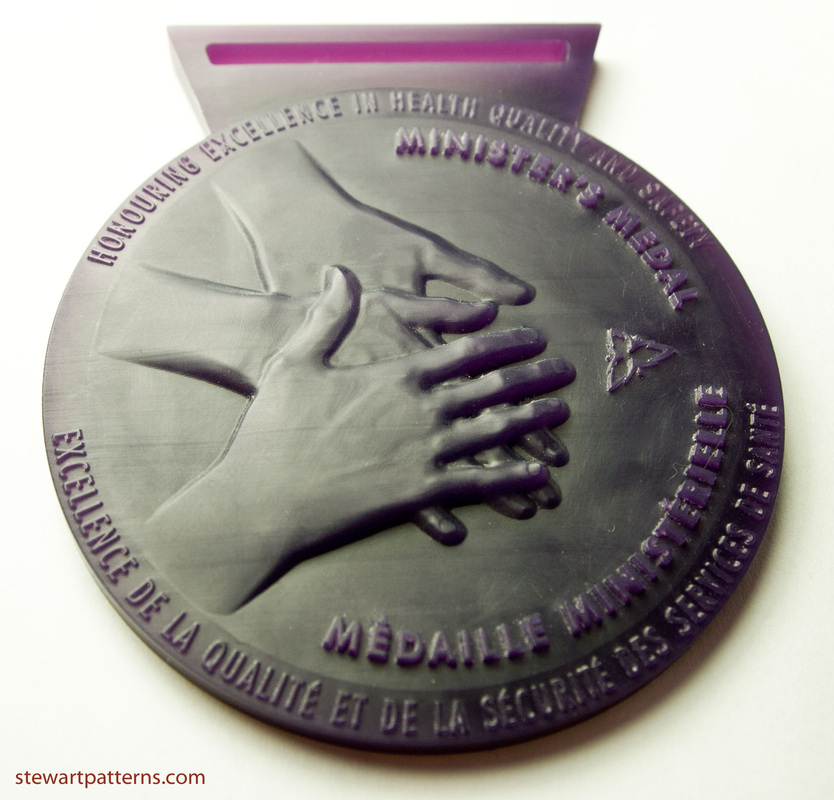
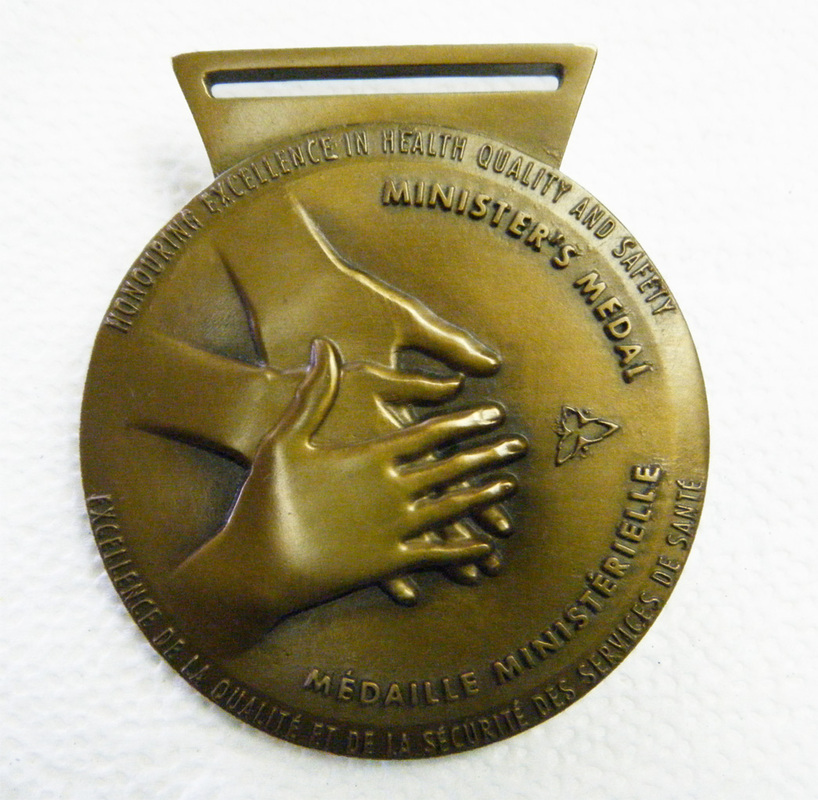

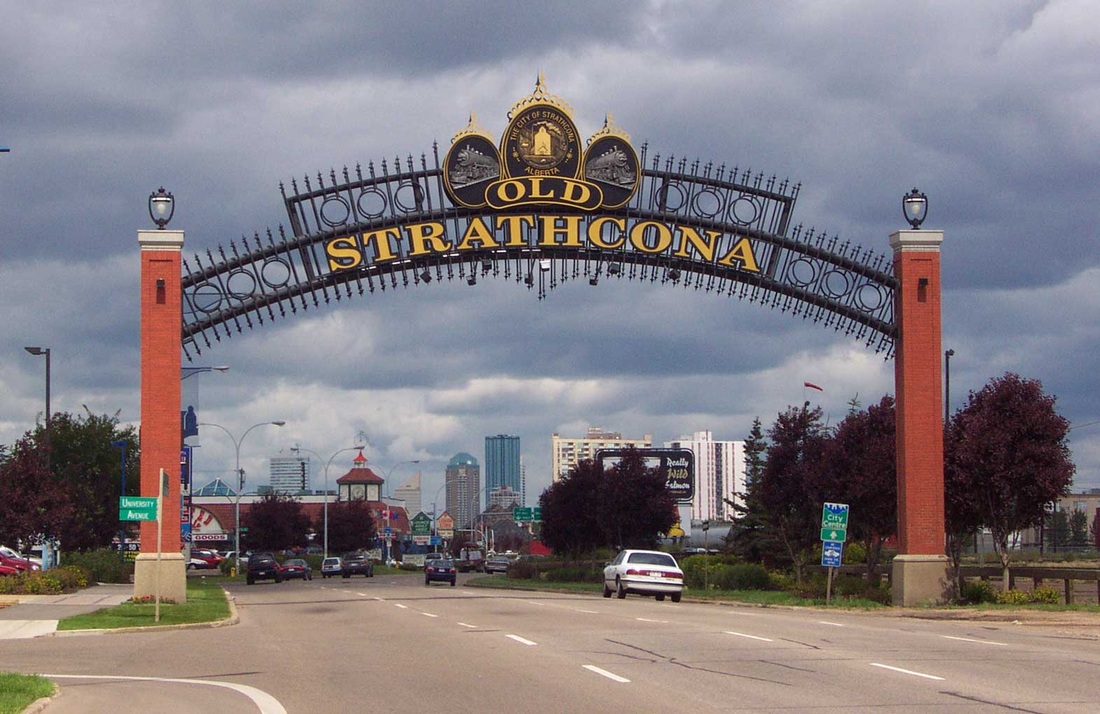
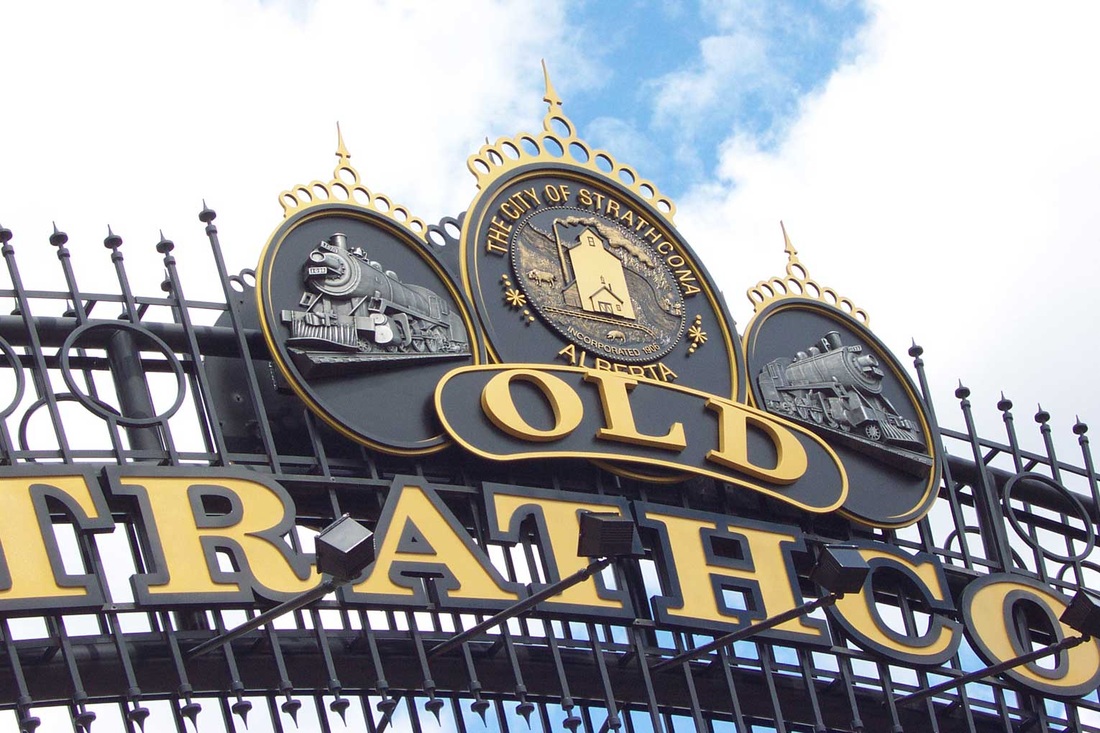
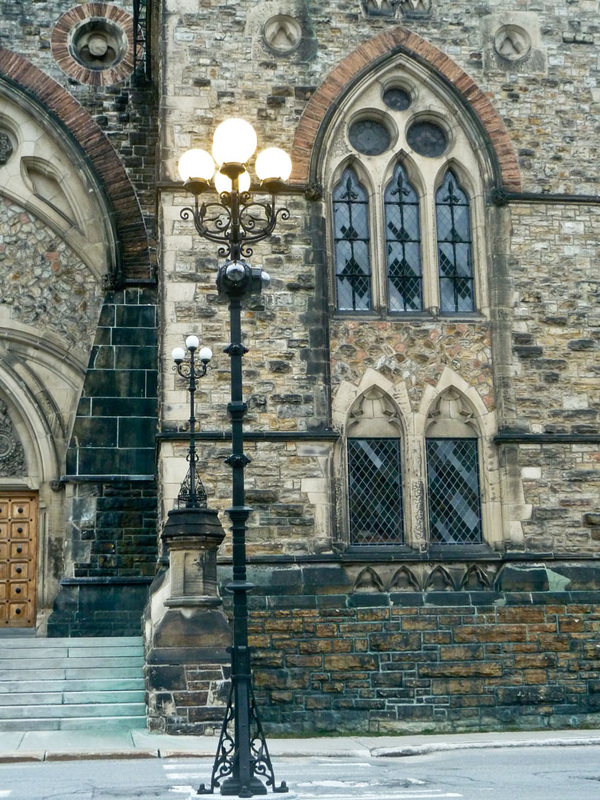
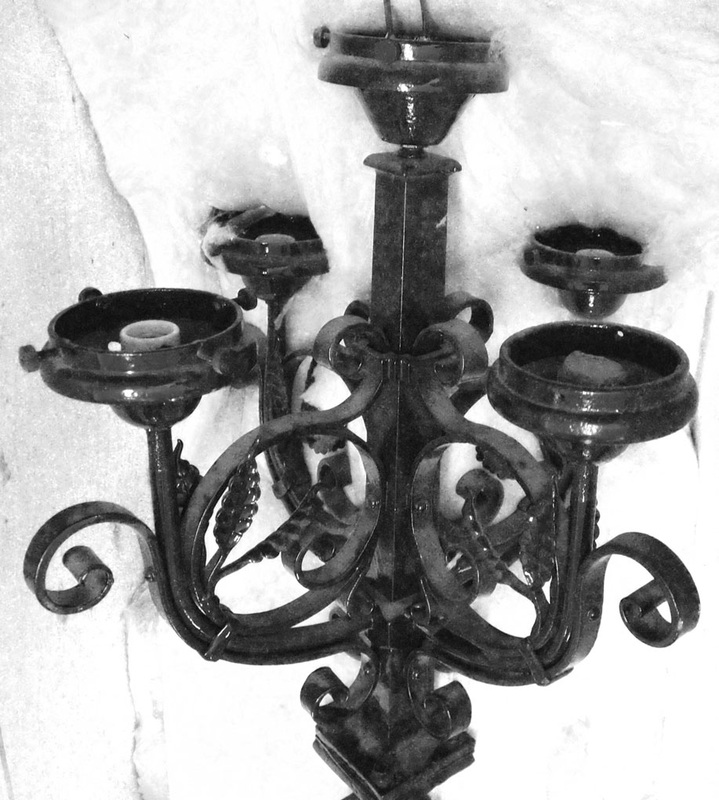
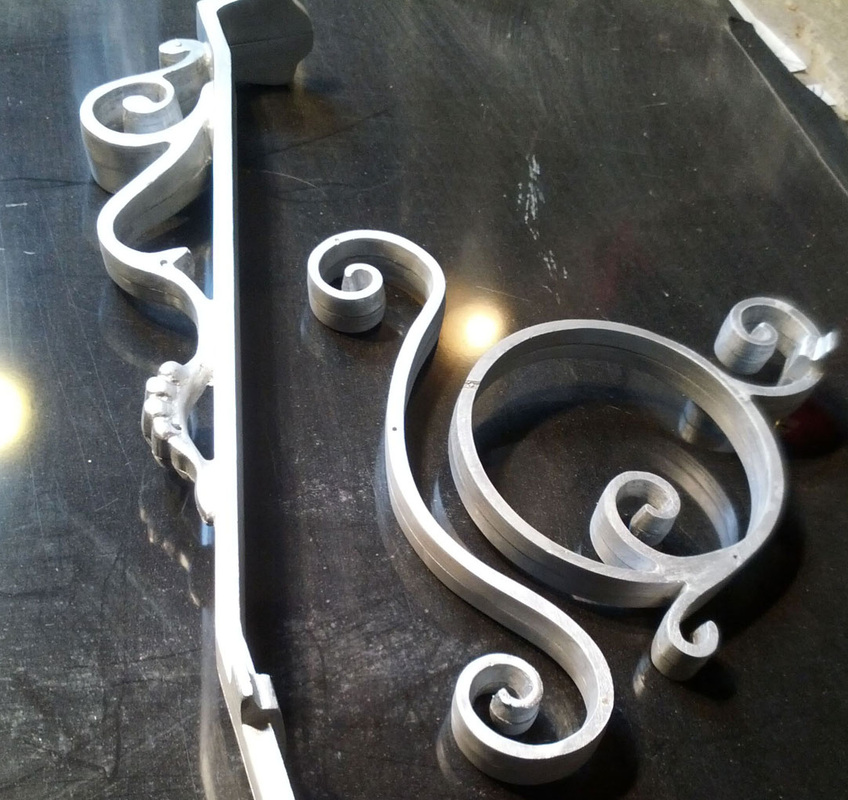
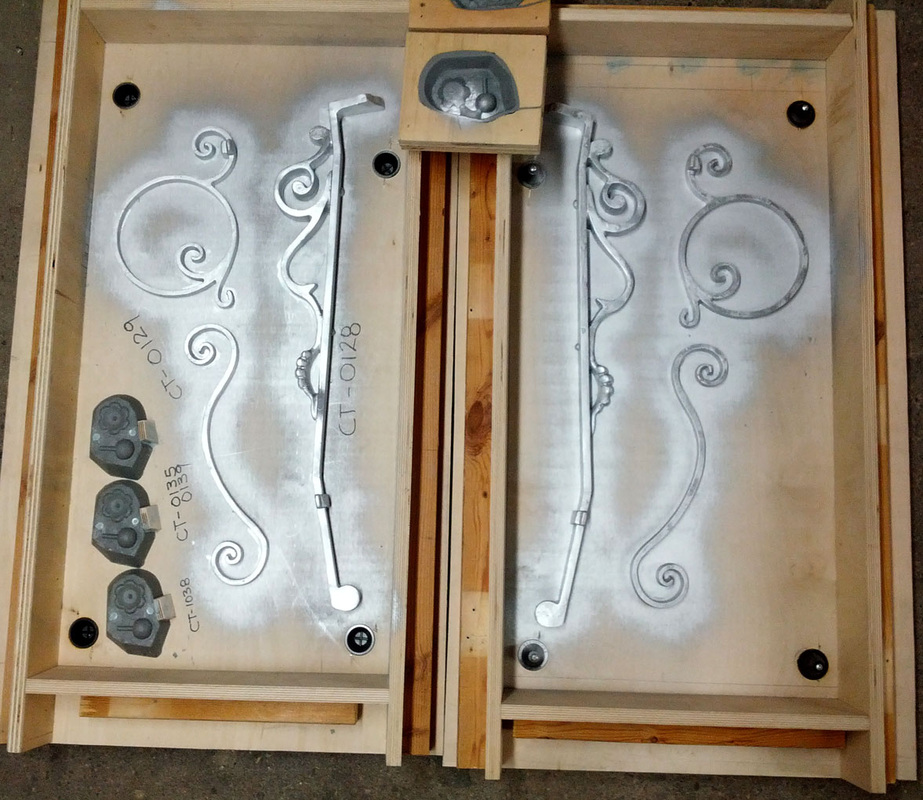
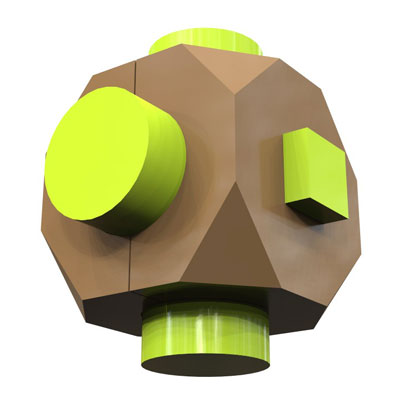
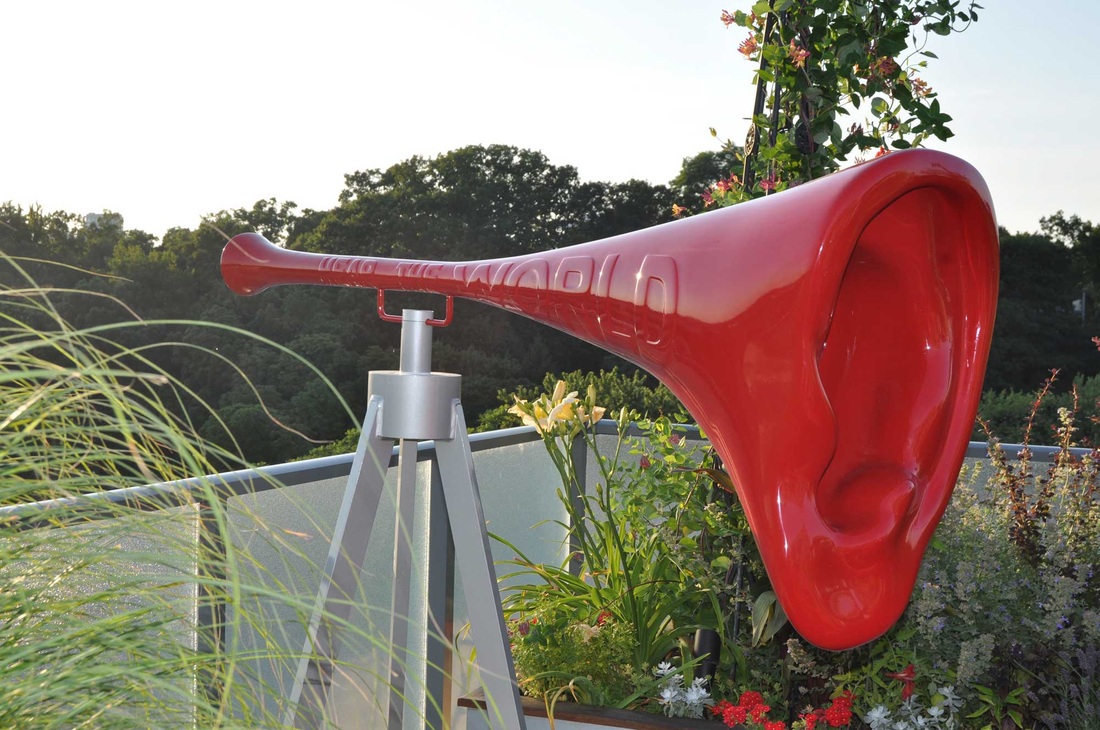
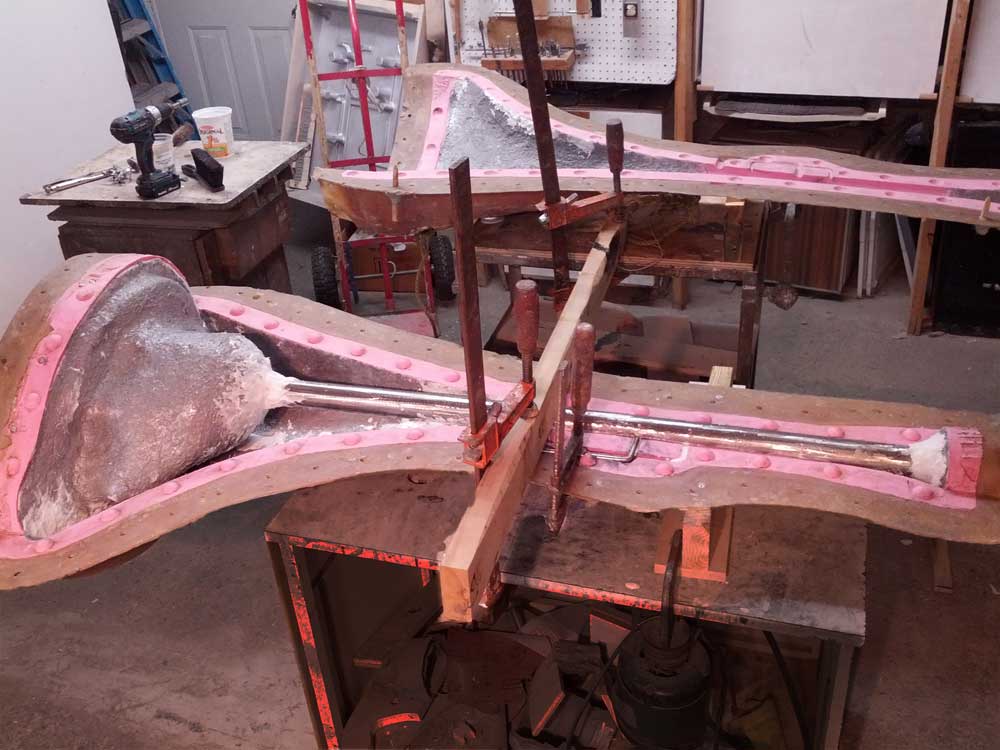
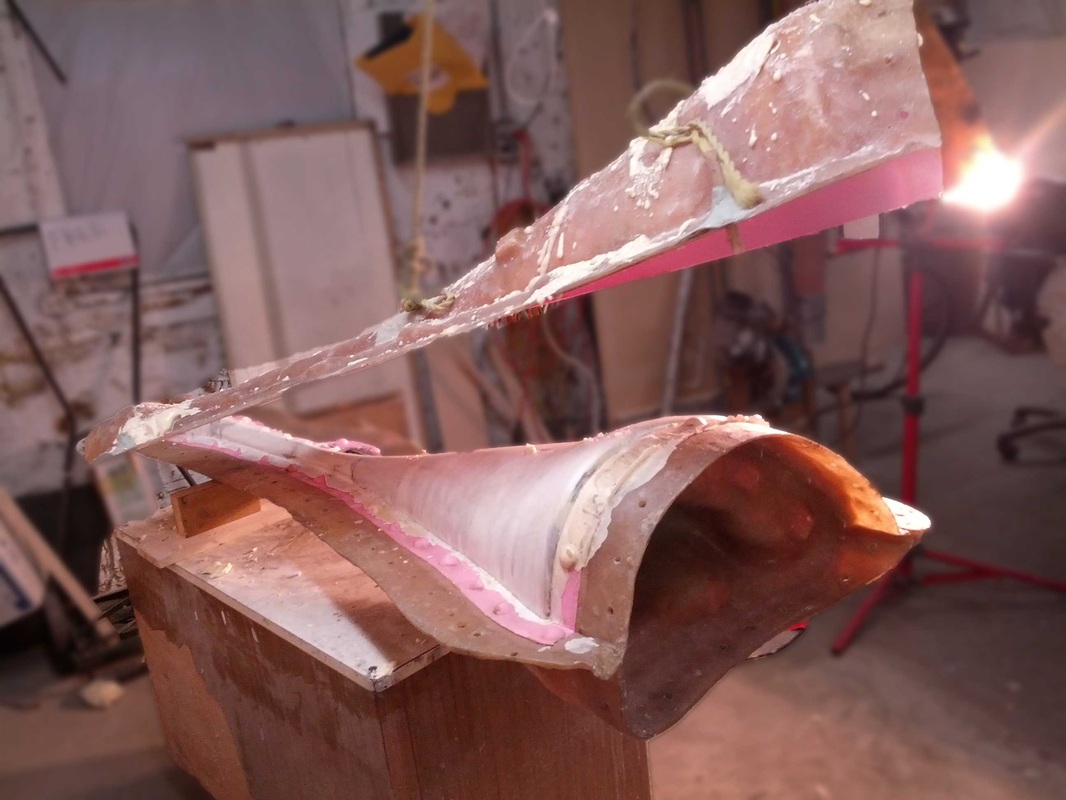
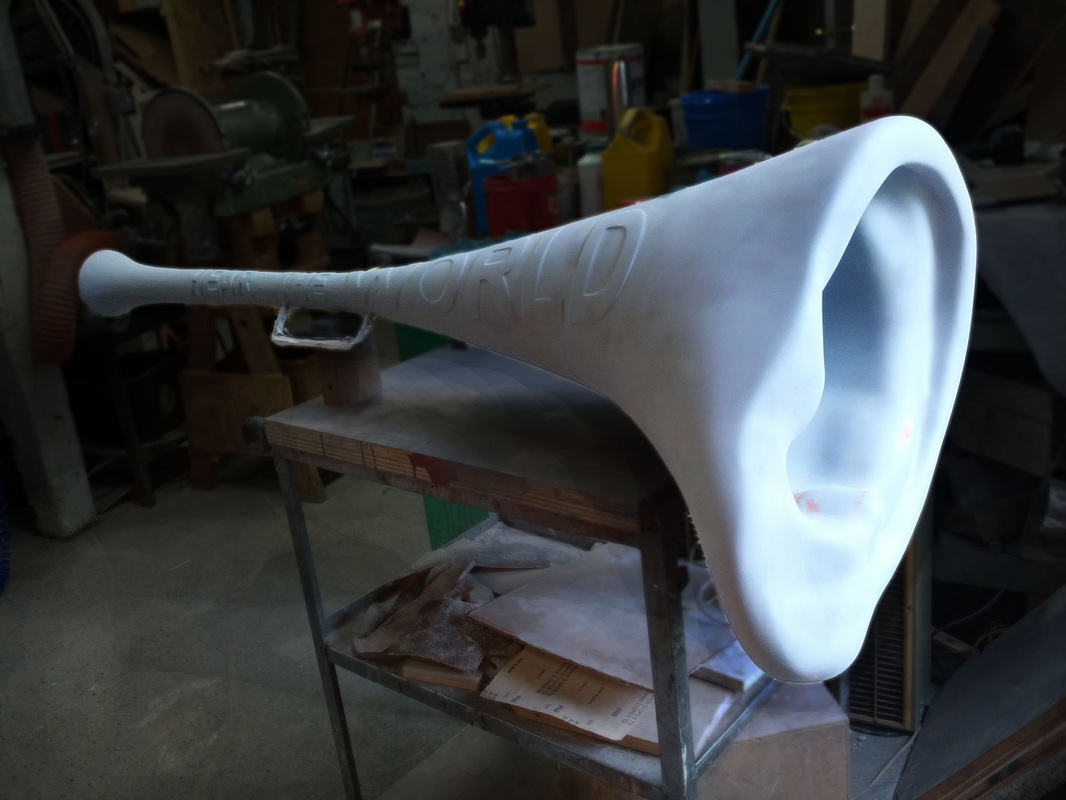
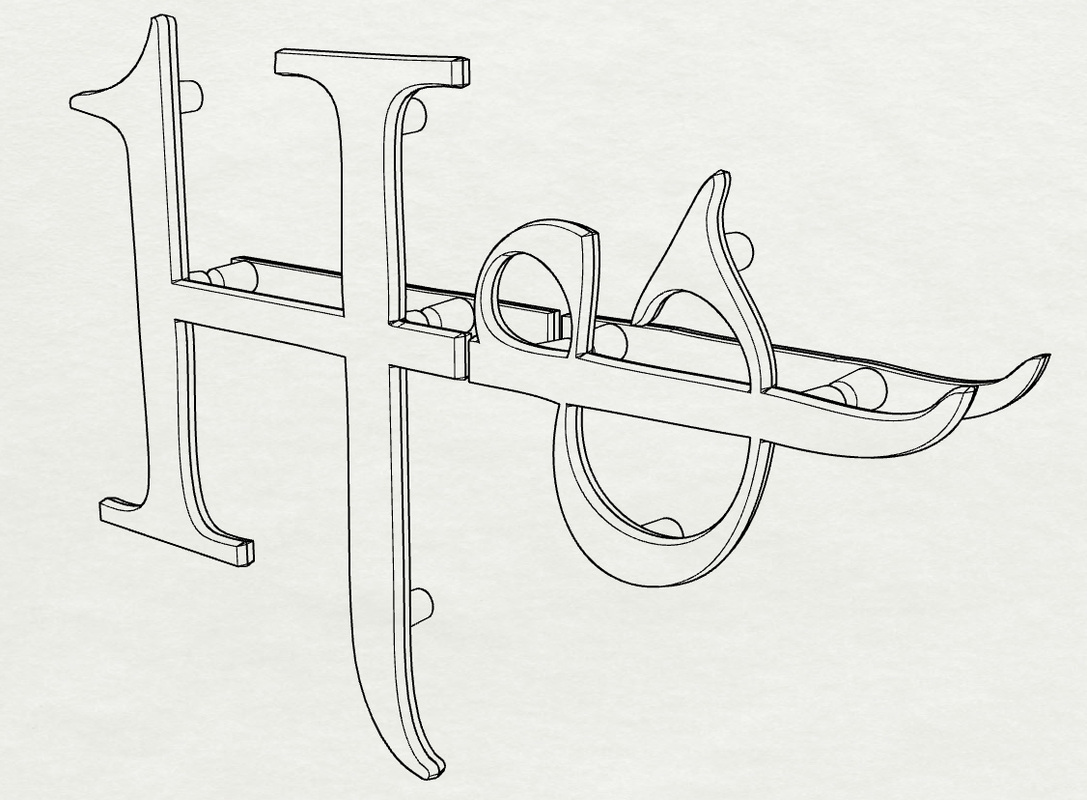
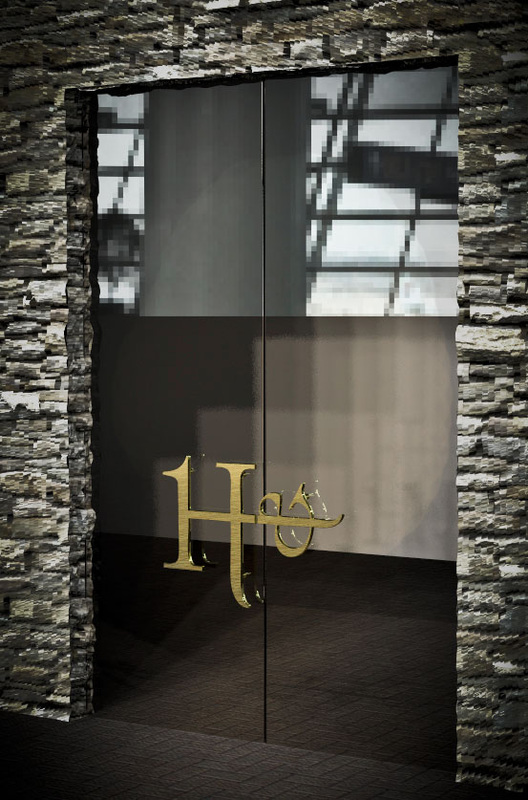
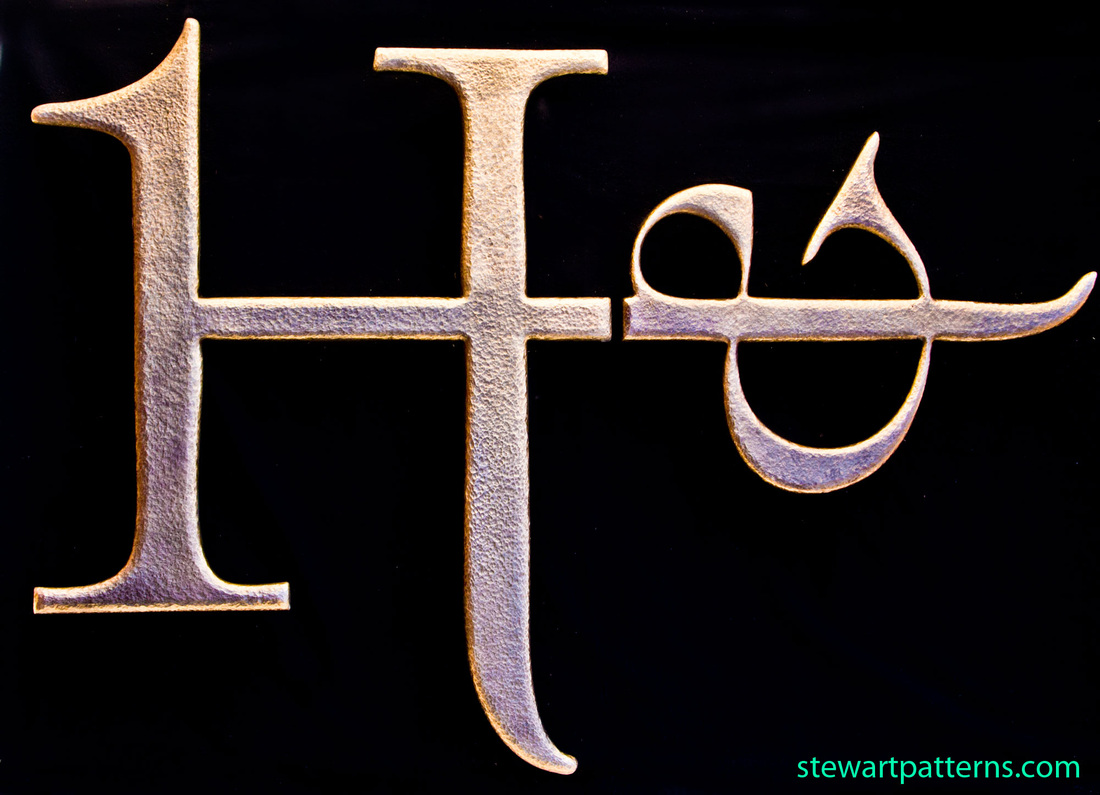
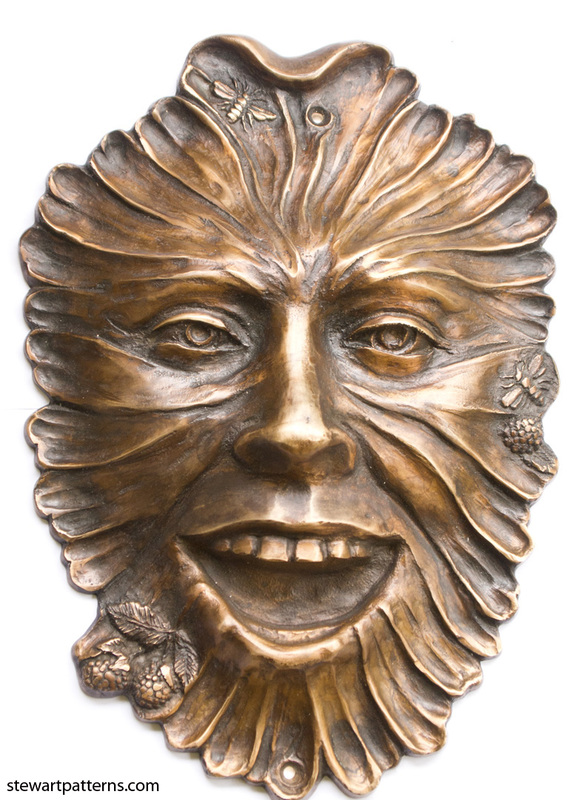
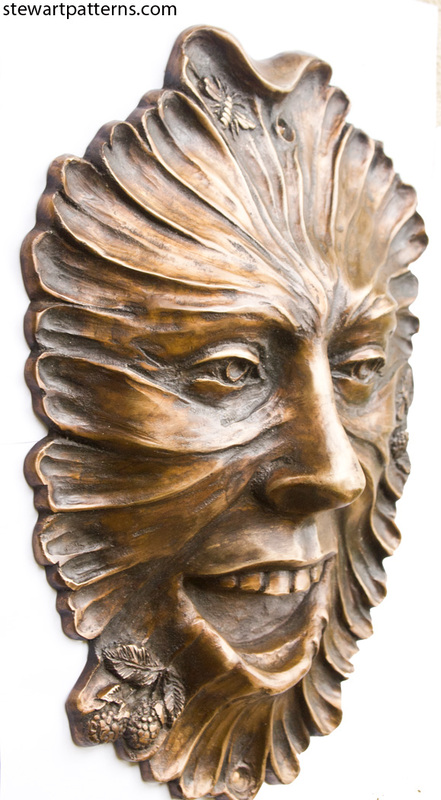
 RSS Feed
RSS Feed
